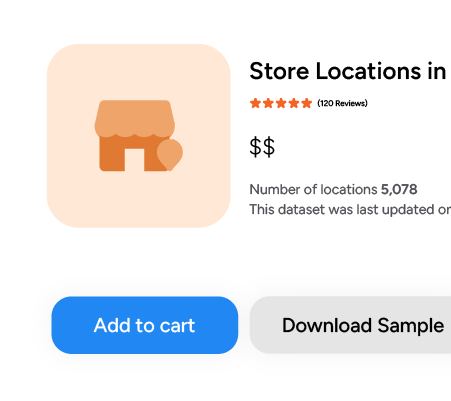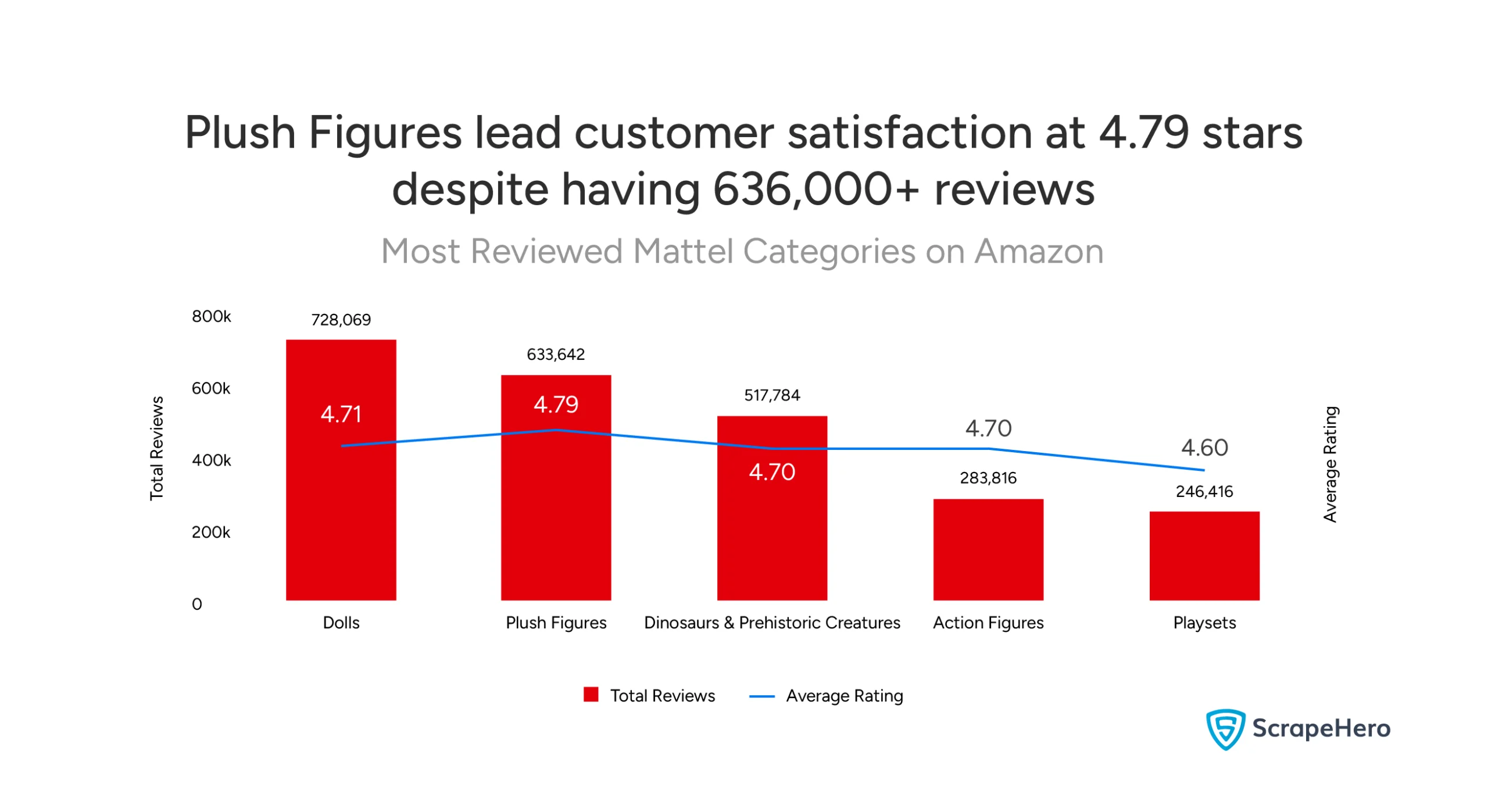Have you ever wondered how big toy brands like Mattel actually perform on Amazon?
Like, what sells the most? What do customers really think? How do they decide what to price at $4 versus $400?
We looked at all 2,447 Mattel products available on Amazon during one week in July to find out.
This Mattel market performance analysis breaks down everything from their top-reviewed products to their pricing strategy, customer ratings, and which categories get the most attention.
We’re talking real numbers that show how a major brand operates on the world’s biggest online store.
But here’s what makes this interesting: the same approach works for any brand on Amazon. Once you know what data to look at and how to read it, you can understand how Nike sells shoes, how Samsung moves electronics, or how any company positions itself in the marketplace.
By the end, you’ll see that analyzing Mattel’s market performance on Amazon isn’t complicated. It just takes the right data and knowing what questions to ask.
How did we get all this data? We used ScrapeHero Cloud’s Amazon Search Results Scraper—an easy-to-use, pre-built tool that collects Amazon product data without any coding required.
It’s designed to help anyone pull the information they need to analyze brands, track competitors, or understand market trends.
Access thousands of global brands and millions of POI location data points ready for instant purchase and download.Power Location Intelligence with Retail Store Location Datasets

Understanding the Data behind Mattel’s Market Performance
Before we jump into the findings, let’s talk about what we’re actually looking at.
We collected data on 2,447 Mattel products listed on Amazon over the course of a week.
That’s not just a sample—it’s their entire catalog available during that week. Every doll, every action figure, every dinosaur toy, every playset.
Why does this matter?
Because when you’re analyzing how a brand performs, you need the full picture. Looking at just the bestsellers or a handful of products won’t tell you much about pricing strategy, product distribution, or where a company is placing its bets.
But when you have everything, patterns start to show up.
The key Mattel business performance metrics we pulled include:
- Customer reviews – How many people are buying and reviewing products
- Pricing data – From the cheapest toys to the most expensive ones
- Ratings – What customers actually think about quality
- Product categories – Where Mattel focuses its lineup
Together, these metrics show us not just what Mattel sells, but how well it’s working.
Let’s start with what customers love most.
What Amazon Customers Love: Mattel’s Top Performers
Review counts tell us which products are actually moving. The more reviews a product has, the more people are buying it and taking the time to share their thoughts.
Here’s what’s getting the most attention.
The Mattel product on Amazon with the most reviews is the 11-inch Star Wars Grogu plush toy, which has garnered 65,899 reviews. That’s more than just popular. For context, the next product down has less than a third of those reviews.

The Toy Story 4 Woody and Bullseye set comes in second with 19,418 reviews. Right behind it is the smaller 8-inch Grogu plush at 19,099 reviews.
Rounding out the top five are Disney Princess dolls—Rapunzel with 17,612 reviews and Cinderella with 17,583 reviews.
These classic characters have been around for decades and continue to drive significant sales.
Mattel’s Pricing Strategy: From Budget to Premium
Price is one of the clearest indicators of how a brand positions itself in the market.
Set prices too high, and you lose everyday shoppers. Go too low, and you leave money on the table or hurt your brand image.
Let’s break down exactly how their pricing works across different product types and what it tells us about their strategy.
Overall Price Distribution of Mattel on Amazon
The $20-$40 category is the most populated, with 1,093 products—nearly half of their entire catalog is within this range.
The $0-$20 range has 644 products, making up the second-largest group.
Combined, these two price ranges account for 1,737 products out of 2,447 total.
That’s 71% of everything Mattel sells on Amazon priced under $40.

Once you get above $40, the numbers drop fast:
- $40-$60: 265 products
- $60-$80: 84 products
- $80-$100: 41 products
- $100+: 54 products
The Most Affordable Category of Mattel Products on Amazon
Among the different categories under which Mattel’s products are listed on Amazon, the category of Costumes has the lowest average price of $14.47.
Card games are next on the list at an average $16.15.
Plush pillows sit at $18.01, followed by plush figures at $20.54.

Gag toys and practical jokes average $23.50, rounding out the budget category list.
What’s notable here: None of these categories are Mattel’s core business. There are no dolls, action figures, or major playsets on this list.
The Most Expensive Category of Mattel Products on Amazon
Toy Sports is the most expensive category of Mattel Products on Amazon at an average price of $149.86.
Handheld Games come in almost identical at $149.42.
Slot cars, race tracks, and accessories are third on the list at an average of $119.99.

Dollhouses come fourth on the list at an average price of $118.22.
Construction vehicles sit at $77.00, making them the “cheapest” of the expensive categories. Still, that’s more than triple the average budget item.
Category Performance of Mattel on Amazon
Examining how products are distributed across categories and how customers respond to them reveals where Mattel’s strengths truly lie. It’s one thing to have a lot of products in a category. It’s another thing entirely to have customers actively buying and reviewing them.
Let’s see which categories are carrying the weight for Mattel’s market performance on Amazon.
Product Distribution Across Categories <h4>
Dolls lead with 691 products—the single largest category in their entire lineup.
This makes sense given Mattel’s history with Barbie and their Disney Princess licenses.
Action figures come in close second with 636 products. This category covers everything from superhero figures to movie characters.
Together, these two categories account for 1,327 products out of 2,447 total. That’s 54% of their entire Amazon presence.

Dinosaurs and prehistoric creatures have 309 products.
Playsets drop to 240 products.
Toys and game room items come in last at just 109 products.
Mattel’s strategy on Amazon is heavily weighted toward character-based play.
Customer Satisfaction by Category
Having a lot of products in a category means nothing if customers aren’t buying them. Review counts tell us what’s actually moving, and ratings tell us if people are happy with their purchases.
Dolls have the most reviews, with 728,069 total reviews and a 4.71 average rating.
This isn’t just the largest product category—it’s also the most actively purchased. Over 700,000 people bought these products and left feedback. That’s massive volume.
Plush figures come in second with 633,642 reviews, but they have the highest rating at 4.79 stars.

Dinosaurs and prehistoric creatures have 517,784 reviews with a 4.70 rating.
Action figures drop to 283,816 reviews with a 4.70 rating.
It is interesting to note that action figures had 636 products, almost as many as dolls, but less than half the review count.
This suggests either lower sales volume per product or that action figure buyers are less likely to leave reviews.
Playsets have 246,416 reviews but the lowest rating at 4.60.
Every single category is rated above 4.6 stars. That’s strong performance across the board. Mattel is delivering quality that keeps customers satisfied.
High ratings matter on Amazon because they directly affect search visibility and conversion rates. When someone is deciding between similar toys, ratings are often the tiebreaker.
The combination of high volume and high ratings in dolls and plush figures shows these aren’t just Mattel’s biggest categories—they’re their best-performing ones.
Customer Satisfaction of Mattel on Amazon
Customer ratings are one of the clearest measures of product quality and brand health. Here’s how Mattel’s products perform on Amazon.
Out of 2,447 products analyzed, 2,005 have 5-star ratings. That’s 82% of their entire catalog earning perfect scores from customers.
Another 344 products have 4-star ratings, bringing the total of well-received products to 2,349—or 96% of everything they sell.

Now look at the low end. Only 16 products received 3-star ratings. Zero products have 2-star ratings. Zero products have 1-star ratings.
82 products have received no star ratings.
What this means for Mattel’s market performance: This is exceptionally strong performance. When almost all of your products are rated 4 stars or higher, it signals consistent quality control. Customers know what they’re getting when they buy Mattel, and they’re rarely disappointed.
Conclusion: Your Turn to Analyze Brand Performance on Amazon
We’ve just walked through a complete breakdown of Mattel’s market performance on Amazon using nothing but publicly available data. Here’s what we learned:
Pricing Approach: 71% of products sit in the accessible $0-$40 range, but have items over $100.
Category Strengths: Dolls and action figures make up 54% of their catalog and generate the most customer activity.
Customer Satisfaction: 82% of Mattel products earn perfect 5-star ratings. Across all categories, ratings stay above 4.6 stars.
Here’s what matters most: every insight in this analysis came from data that’s publicly visible on Amazon.
We didn’t need insider information, financial reports, or industry connections. We used ScrapeHero Cloud’s Amazon Search Results Scraper to collect product listings, prices, reviews, ratings, and categories—then organized them to reveal patterns.
This exact approach works for any brand selling on Amazon. Want to understand how your competitor prices their products? Pull their data. Curious which Nike shoe models get the most reviews? The data’s there. Need to see if there’s a gap in the beauty product market that L’Oreal isn’t filling? You can find out.
How to get the Data for An Analysis Effortlessly?
The most effortless way to get data for an analysis is to outsource to a web scraping service like ScrapeHero.
ScrapeHero Cloud’s scrapers are a go-to for small data requirements because of their ease of use.
However, outsourcing with ScrapeHero’s web scraping service is the smarter choice if you require custom data extraction, complex web navigation, or simply want to save time.
We are among the top 3 web scraping service providers globally. And since we are a full-service data provider that handles everything, including data collection, accuracy, and delivery, you don’t need software, hardware, or scraping expertise. Instead, you can focus on using data for your business, not extracting it.
Connect with ScrapeHero today.
Report by ScrapeHero using publicly available data. This report is independent and not affiliated with Mattel.








